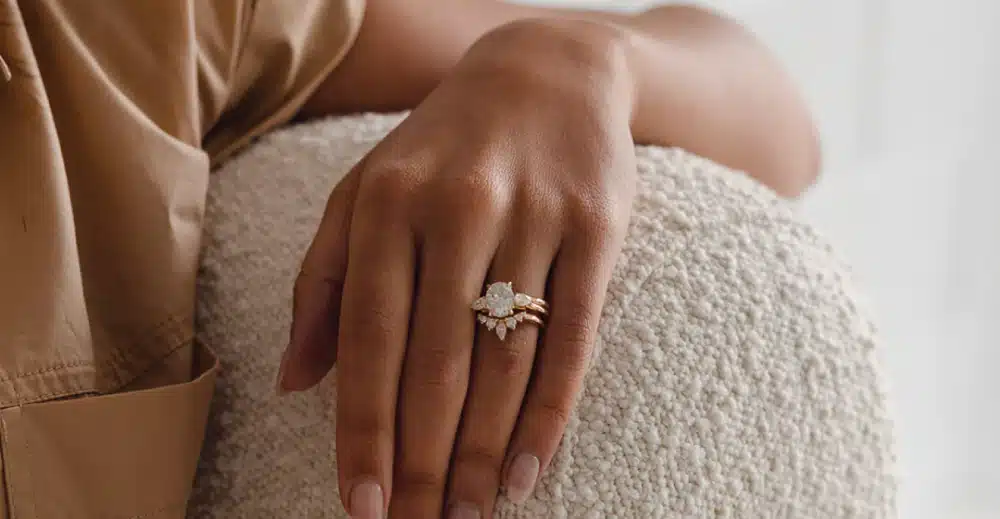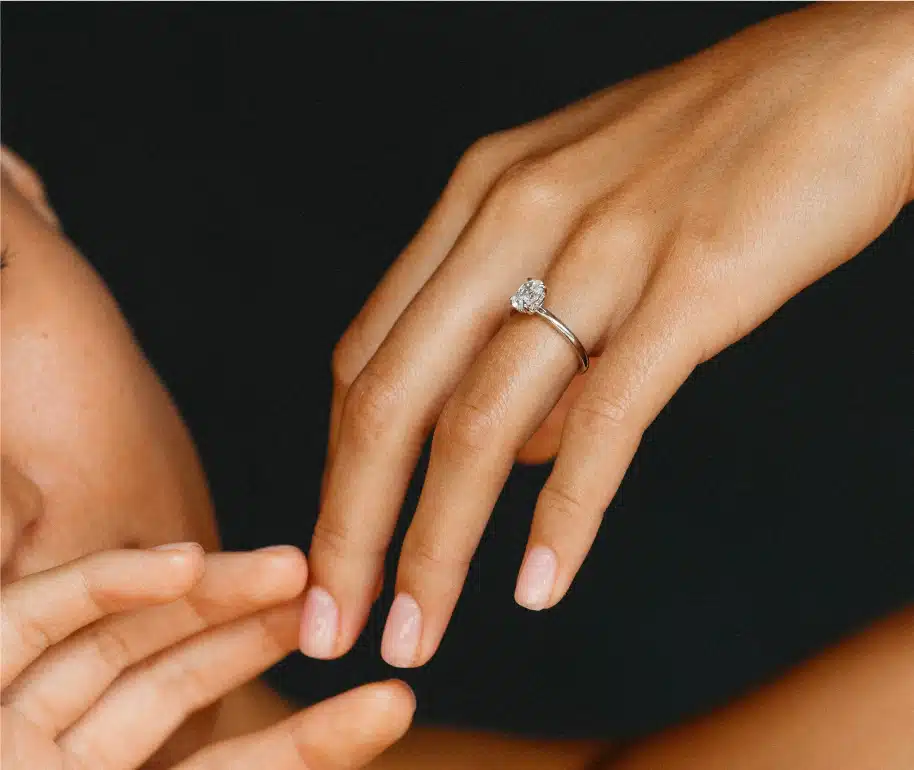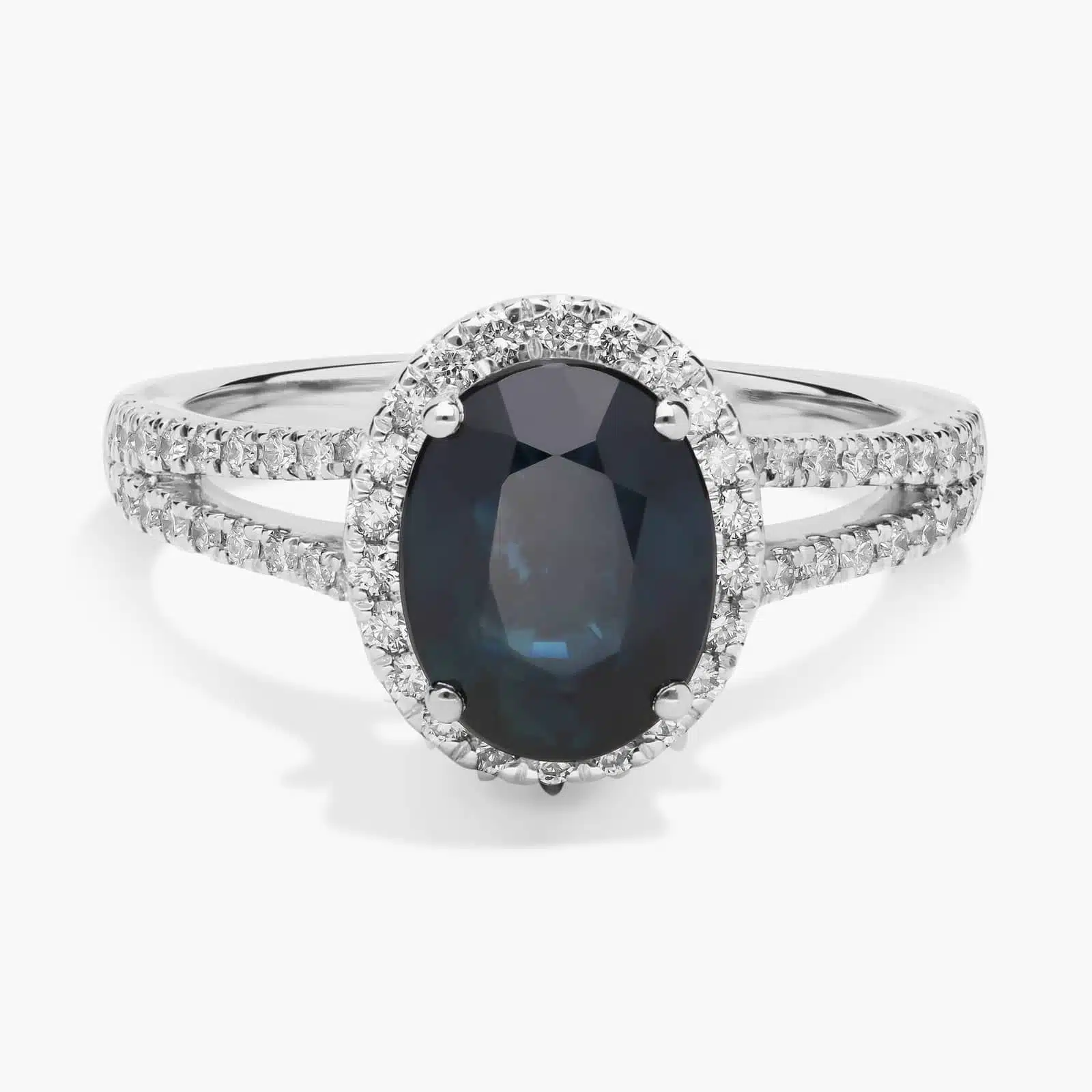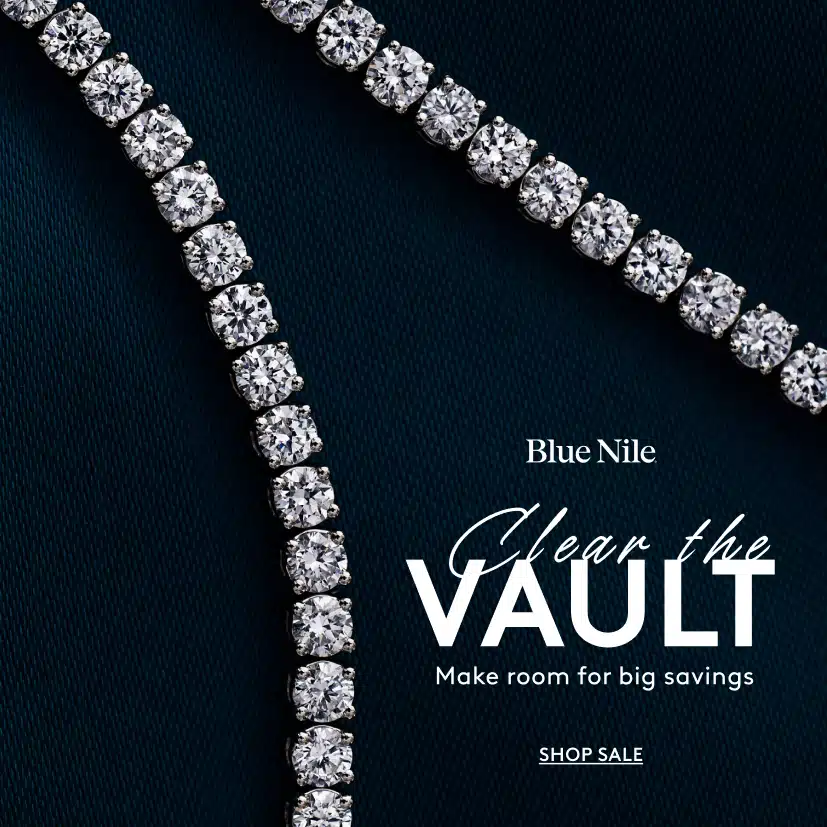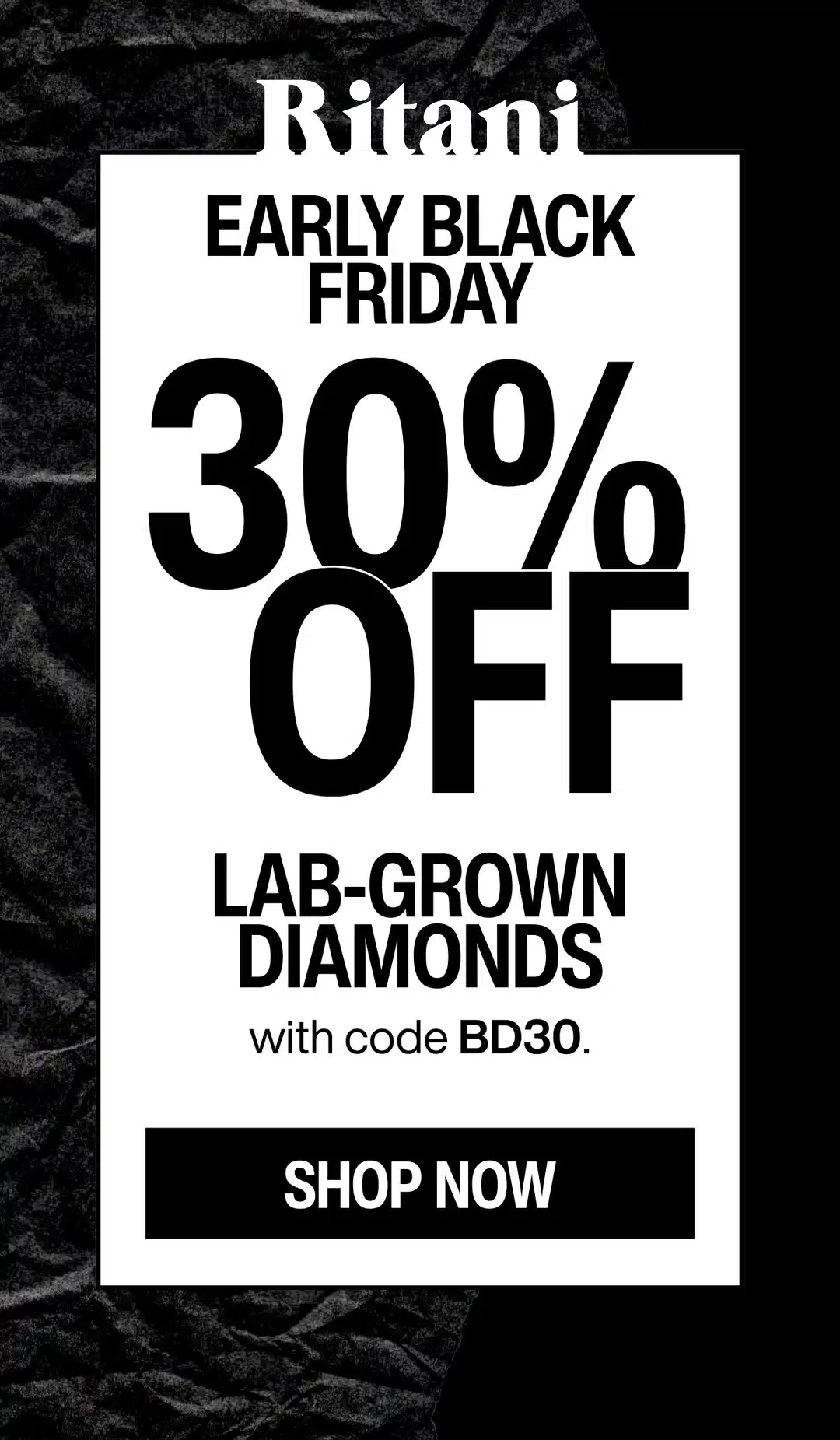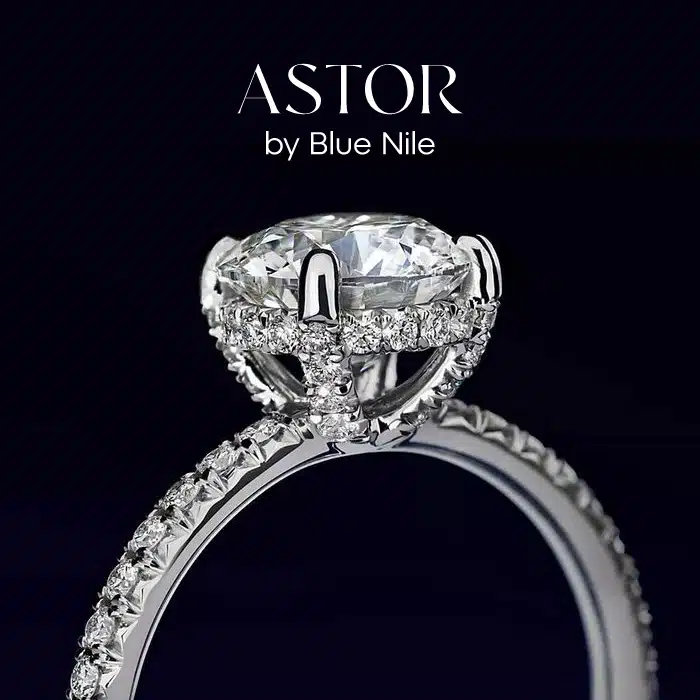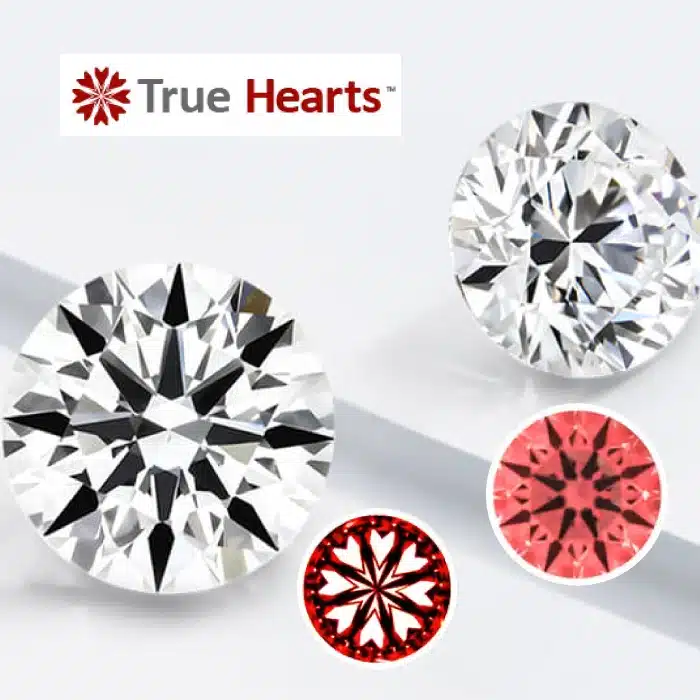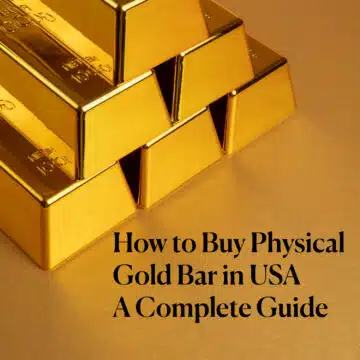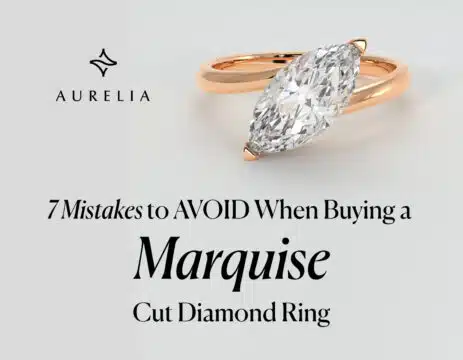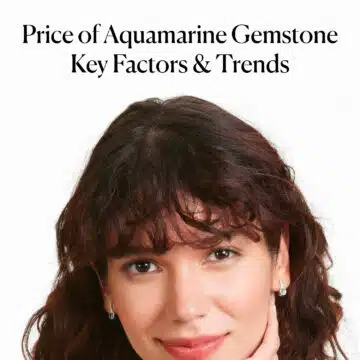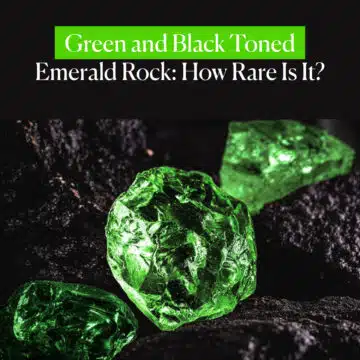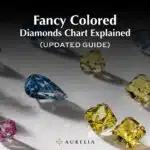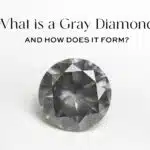Alright, let’s talk about the heavyweights. Choosing between Astor by Blue Nile and True Hearts by James Allen boils down to a fundamental choice: do you prefer the data-driven assurance of Astor or the visually verifiable perfection of True Hearts? In one corner, you have Blue Nile’s exclusive collection.
In the other, James Allen’s signature diamonds. Both promise you the absolute best of the best, the most brilliant and fiery diamonds on the market. But let’s not mince words—they also come with a premium price tag. The real question is, what does that really mean for you and your wallet?
After spending the first decade of my career on the wholesale side of this business, looking at thousands of stones before they ever got a brand name, I can tell you this: ‘premium collections’ can be tricky. Sometimes you’re paying for a genuine, measurable step up in quality that you can see and verify.
Other times, you’re just paying for a fancy marketing story. My job here is to pull back the curtain and show you exactly what’s what.
In this guide, we’re going to determine if the extra cost for these signature diamonds is truly justified. We’ll put them head-to-head, comparing not just the stones themselves but the entire shopping experience.
It’s more than just a simple James Allen vs. Blue Nile debate; it’s a deep dive into their very best offerings to see which one gives you the most sparkle for your money. By the end, you’ll know exactly which path is the right one for you.
- First, What Are We Comparing Against? Understanding "Standard" Ideal Diamonds
- The Blue Nile Ecosystem: A Deep Dive into Astor Diamonds
- The James Allen Ecosystem: Unpacking True Hearts Diamonds
- The Main Event: Astor vs. True Hearts Head-to-Head
- The Verdict: My Final Recommendation as Your "Man on the Inside"
- Frequently Asked Questions (FAQs)
First, What Are We Comparing Against? Understanding “Standard” Ideal Diamonds
Before we jump into the branded stuff and start comparing signature collections, let’s get one thing straight: a standard GIA-graded “Excellent” or an AGS-graded “Ideal” cut diamond is already a fantastic stone.
Trust me on this. We’re talking about the top tier of all diamonds cut and polished in the world. Buying a stone with this grade is a solid, reliable choice that will get you a beautiful, brilliant diamond.
But here’s the secret that the industry doesn’t always advertise, and something I saw every day when I was in wholesale. The “Excellent” grade isn’t a single point of perfection; it’s a range. Think of it like getting an ‘A’ in a class.
A score of 91 is an A, but so is a 99. Both are fantastic grades, but one is objectively better than the other. It’s the same with diamonds. Two stones can both earn a GIA Excellent cut grade, but one can have slightly better proportions and facet alignment, making it visibly more brilliant and fiery than the other.
And that right there—that small but crucial difference between the “good” Excellents and the “truly exceptional” Excellents—is the entire reason collections like Astor and True Hearts exist. They are designed to be a filter, a way for retailers to sift through thousands of top-grade diamonds to find the ones that represent the very best of the best.
Understanding this baseline is key, because it’s the only way to figure out if the extra money for these curated collections is a smart investment in superior sparkle or just an extra cost.
The Blue Nile Ecosystem: A Deep Dive into Astor Diamonds
To really understand the Astor collection, you first have to understand the company that created it. Blue Nile is a giant, an absolute behemoth in the online diamond world. From my time on the wholesale side, I can tell you their name is synonymous with inventory.
Astor by Blue Nile is the collection for the data-driven buyer who demands scientific proof of performance. These diamonds are selected from the top 0.1% of Blue Nile's massive inventory, representing the most elite stones they offer. The collection's foundation is a unique dual-certification system that removes all guesswork, providing objective, third-party validation of a diamond's sparkle.
WHAT WE LOVE ABOUT THIS COLLECTION:
- Exclusive Dual Certification: Every diamond includes a GIA report plus a GemEx Light Performance report.
- Scientific Brilliance Scores: The GemEx report provides objective, numerical scores for Brilliance, Fire, and Sparkle.
- Ultimate Curation: Represents the absolute pinnacle of Blue Nile's inventory—only one in a thousand diamonds makes the cut.
- Guaranteed Performance: The strict vetting process guarantees an elite level of light performance, backed by data.
- The "Peace of Mind" Purchase: Perfect for buyers who want the proven best without needing to become a gemology expert themselves.
- Backed by Blue Nile's Upgrade Program: Your Astor diamond's full value can be applied toward a future upgrade.
Think of their website not as a jewelry store, but as a massive, searchable warehouse for diamonds where you get direct access to stones from all over the world. It’s a model built on scale and competitive pricing.
What You Get with a “Regular” Blue Nile Ideal Cut Diamond
Let’s be clear, Blue Nile’s regular inventory is where many people find incredible value, and for good reason. You get three key things:
- A Massive Selection: You can find almost any combination of carat, color, and clarity you can dream of.
- GIA Certification: Every loose diamond comes with a GIA report, which is the gold standard for unbiased grading.
- Competitive Pricing: Their business model keeps overhead low, and the prices reflect that. It is the quintessential “value” play.
But here’s the trade-off, and it’s a big one: the sheer number of options can be completely overwhelming. You might be looking at thousands of GIA “Ideal” or “Excellent” cut round diamonds that look identical on paper. To find the truly exceptional stone among them—the one at the top of the “A” grade we talked about—you have to do the homework.
You have to become a mini-expert, pouring over tables of percentages and angles, trying to decipher which stone will perform better in the real world.
So, What is Astor by Blue Nile?
Let’s pull up a real-world example. Take a look at the product page for a typical Astor diamond on Blue Nile’s website and I’ll show you what to pay attention to.

This is where Blue Nile steps in and says, “Let us do the hard work for you.” Astor by Blue Nile is their ultra-exclusive collection, representing about one in a thousand, or the top 0.1%, of their diamonds. This is Blue Nile’s way of curating their own massive warehouse and hand-picking only the stones with the most exceptional cut quality.
Here’s what makes an Astor diamond different, and why this matters to your wallet:
- Uncompromising Proportions & Symmetry: Astor diamonds are filtered to eliminate any stones with suboptimal proportions. Anything too shallow, too deep, too wide, or too narrow is out. Every facet must be perfectly aligned and symmetrical, ensuring light reflects with maximum efficiency.
- The Dual Certification: This is the single biggest differentiator. Every Astor diamond comes with two reports:
- The GIA Report: This is the diamond’s fundamental identity card, grading its 4Cs. It’s the baseline for quality.
- The GemEx Report: This is the proof in the pudding for brilliance, and it’s what you’re paying the premium for. GemEx is a third-party lab that uses a patented imaging spectrophotometer to scientifically measure a diamond’s light performance. It gives you a score on three key metrics: Brilliance (the return of white light), Fire (the flashes of colored light), and Sparkle (how the diamond scintillates as it moves).
Basically, while a GIA report tells you a diamond has the potential to be brilliant based on its proportions, the GemEx report provides scientific proof of how brilliant it actually is.
Astor by Blue Nile vs. Regular Blue Nile Inventory
| Feature | Astor by Blue Nile | Regular Blue Nile Ideal Cut |
| Cut Quality | Top 0.1% of inventory. Strictly vetted for ideal proportions and flawless symmetry. | GIA ‘Ideal’ or ‘Excellent’ grade, which represents a range of quality from good to exceptional. |
| Certification | Dual Certified: GIA Report and a GemEx Light Performance Report. | GIA Report only. |
| Light Performance Data | Yes. A dedicated GemEx certificate scientifically measures and scores Brilliance, Fire, and Sparkle. | No. Light performance must be inferred by analyzing the proportions on the GIA report. |
| Price Premium | Significant. Expect to pay around 20-30% more than a standard GIA Ideal diamond of the same specs. | Baseline market price. This is the standard for value. |
| Best For… | The buyer who wants ultimate assurance, values scientific measurement, and is willing to pay a premium for a pre-vetted, top-performing diamond. | The savvy, hands-on buyer who is willing to do their own research to sift through options and find the best possible value. |
Ultimately, Blue Nile’s entire business model is built on a foundation of trust and massive inventory, something I go into more detail on in my full Blue Nile Review. Astor is simply their way of offering a shortcut to the very best of that inventory.
The James Allen Ecosystem: Unpacking True Hearts Diamonds
Now let’s cross the street and talk about James Allen. If Blue Nile built its empire on massive inventory and data, James Allen built theirs on technology and transparency. Their entire claim to fame, the thing they do better than almost anyone, has always been their presentation.
True Hearts is James Allen's collection for the visual perfectionist. These diamonds represent the top 1% of all diamonds graded for cut quality, specifically screened for flawless optical symmetry—what the industry calls "Hearts and Arrows." From my professional standpoint, this is as close to a perfectly cut diamond as you can get, and James Allen gives you the tools to see it for yourself.
WHAT WE LOVE ABOUT THIS COLLECTION:
- Verifiable Hearts & Arrows Pattern: The ultimate visual proof of a masterfully cut round diamond.
- Advanced Imaging Included: ASET and Idealscope images are provided to let you analyze the light performance like a pro.
- AGS "Ideal" Certification: Many True Hearts diamonds carry the coveted AGS Ideal grade—the industry's most stringent for cut.
- Unmatched Visual Scrutiny: Combines the Hearts & Arrows precision with James Allen's best-in-class 360° HD videos.
- Empowers the Buyer: You don't just have to trust a report; you get the visual evidence to confirm the diamond's superior brilliance.
- Guaranteed Eye-Clean Perfection: These stones are hand-selected to be free of any distracting inclusions to the naked eye.
Their model is built on one simple, powerful idea: letting you see the diamond better than anyone else.
What You Get with a “Regular” James Allen Ideal Cut Diamond
When you shop the standard inventory at James Allen, you’re getting top-quality diamonds, most with GIA or AGS certifications. But the real game-changer, and a huge advantage for any savvy shopper, is their technology. Every single loose diamond in their inventory is shown in a 360°, high-definition video.
This isn’t just a nice feature; it’s a revolutionary tool. You’re no longer just buying a diamond based on a grading report. You become the inspector. You can zoom in, rotate the stone, see how it plays with the light, and look for inclusions yourself.
It gives you an incredible amount of power and confidence in your purchase, which I walk through in detail in my full James Allen Review.
What Makes a True Hearts Diamond Different?
Below is a True Hearts diamond from James Allen. You’ll see a different approach from Blue Nile to proving performance.

So if their standard offering is already so transparent, what’s the point of their premium collection? The answer is one word: precision.
True Hearts by James Allen is all about optical precision. It’s their nod to the legendary “Hearts and Arrows” (H&A) pattern, which is the ultimate visual indicator of a perfectly symmetrical round brilliant cut.
When a diamond’s facets are aligned in three dimensions with near-perfect precision, a special scope reveals a crisp pattern of eight hearts from the bottom (pavilion) and eight arrows from the top (crown).
This goes a step beyond even a GIA “Excellent” symmetry grade. A GIA report grades symmetry based on 2D measurements, but Hearts and Arrows is proof of meticulous 3D alignment. It’s a sign of a master cutter.
And here’s how James Allen empowers you to verify this claim—they give you the tools the pros use:
- Idealscope / ASET Images: For their True Hearts diamonds, they provide advanced light performance images.
- An Idealscope image is like a light-return map. Red areas show strong light return (brilliance), black shows contrast (which makes the sparkle pop), and white shows light leakage (which you want to minimize).
- An ASET (Angular Spectrum Evaluation Tool) image is even more detailed. Red and green show light returning from different angles, and blue highlights the contrast.
They don’t just tell you the diamond has superior light performance; they give you the evidence to see it for yourself. This is a massive confidence booster when you build your own engagement ring on James Allen because you can be certain the centerpiece is a top-tier performer.
True Hearts vs. Regular James Allen Inventory
| Feature | True Hearts by James Allen | Regular James Allen Ideal Cut |
| Cut Quality | Top tier of inventory, screened for exceptional optical precision and visual Hearts & Arrows symmetry. | GIA/AGS ‘Ideal’ or ‘Excellent’ grade. Quality is high, but the very best stones must be found by the user. |
| Certification | GIA or AGS. (The AGS ‘Ideal’ grade is considered the industry’s most stringent for cut quality). | GIA or AGS. |
| Light Performance Data | Yes. Verifiable through Idealscope and ASET images provided right on the website for user analysis. | Yes, but requires user skill. Performance must be judged by carefully inspecting the 360° HD video. |
| Price Premium | Yes. Generally a 15-25% premium over a standard Ideal cut diamond with the same paper specs. | Baseline market price. Excellent value for the confident shopper. |
| Best For… | The buyer who wants visual proof of perfection and trusts their own eyes, aided by professional imaging tools. | The hands-on, confident buyer who is comfortable using the 360° video technology to find their own top-performing diamond. |
Diamond IQ Test: Natural or Lab-Grown?
Two identical diamonds: GIA Certified, 1.51ct, D Color, VVS1, Ideal Cut. One is natural ($16,530), the other is lab-grown ($2,390). Choose the diamond you like better and see if you can match it to its origin.
The Main Event: Astor vs. True Hearts Head-to-Head
Alright, this is the moment of truth. We’ve seen what each collection offers compared to their standard inventory, but how do they stack up against each other? We’re going to break it down feature by feature.
From my years in the business, I can tell you that the winner often comes down to what you, the buyer, value most: data-driven proof or visual perfection.
Cut Precision & Light Performance: The Science
This is the single most important factor. Both brands promise superior brilliance, but they go about proving it in very different ways.
- Astor’s Approach: The Scientific Report. Blue Nile’s Astor relies on the GemEx report. Think of this as a lab test for sparkle. It provides objective, third-party scores for Brilliance, Fire, and Sparkle.
It’s a data-driven approach that says, “Here are the numbers that prove this diamond performs at the highest level.” It’s clean, scientific, and removes ambiguity. - True Hearts’ Approach: The Visual Evidence. James Allen’s True Hearts banks on optical precision you can see. The Hearts & Arrows pattern isn’t just pretty; it’s a direct visual sign of a meticulously aligned cut.
More importantly, they give you the ASET and Idealscope images—the same tools a gemologist would use. This is like getting a live map of the diamond’s light-handling capabilities. Red means brilliant, white means leaking light. It’s a visual, intuitive way to see performance in action.
My Take: While the GemEx report is robust, I have to give the edge here to True Hearts. Why? Because for most people, seeing is believing. It’s one thing to be told a diamond has “High Brilliance,” it’s another thing entirely to see a sea of red on an Idealscope image and know for yourself that the diamond is a light-return machine. The James Allen tools are more intuitive and empowering for the average buyer.
Certification & Proof: Who Grades the Graders?
The paper trail behind a diamond is your ultimate protection. Here, the differences are subtle but incredibly important.
- Astor’s Certification: GIA + GemEx. This is a powerful, trustworthy combination. You get the world’s most recognized grading report (GIA) for the core 4Cs, plus a specialized, third-party report (GemEx) that validates its light performance. It’s a double layer of security.
- True Hearts’ Certification: GIA or AGS. This is the key insider detail. While most True Hearts diamonds have a GIA report, a significant number are graded by the AGS (American Gem Society). In the diamond world, the AGS is revered for one thing above all else: its cut grade.
The AGS Ideal grade, or “AGS 0,” is based on a more advanced scientific model than GIA’s. It analyzes the diamond’s light performance directly. An AGS Ideal certification is, in my professional opinion, the most stringent and prestigious cut grade a diamond can receive.
My Take: This is close, but True Hearts has the higher ceiling. The Astor GIA + GemEx combo is fantastic and consistent. However, a True Hearts diamond that comes with an AGS Ideal report is arguably the best-certified diamond for cut quality you can buy. It’s the grading report that the most obsessive, cut-focused diamond experts covet.
Selection & Availability: Can You Find What You Want?
What good is a premium collection if you can’t find the specific diamond you’re looking for?
- Astor’s Selection: Highly curated, which also means limited. The Astor collection is only available in three shapes: Round Brilliant, Princess, and Cushion. Because they only accept the top 0.1% of their inventory, the total number of available stones at any given time is naturally smaller.
- True Hearts’ Selection: The inventory for True Hearts is consistently larger. While they focus on the same popular shapes (Round, Princess, Cushion), their broader acceptance criteria (still top-tier, but a larger pool) means you have significantly more options to choose from.
This gives you a better chance of finding that perfect balance of carat weight, color, and clarity that fits your budget.
My Take: This is a clear win for True Hearts. More options means more flexibility and a better chance of finding your perfect diamond without having to compromise on your specifications.
Price & Value: Let’s Talk About the Money
Here’s the deal. Both collections come at a premium, typically costing anywhere from 15% to 30% more than a standard GIA Excellent cut diamond with the same specs on paper. The critical question isn’t “which is cheaper,” but “what am I getting for that extra money?”
The value proposition is different for each:
- With Astor, you’re paying for peace of mind. The premium is for Blue Nile’s expertise and the assurance of the GemEx report. It’s a “done-for-you” service that guarantees a top-performing stone without you needing to become a diamond expert.
- With True Hearts, you’re paying for verifiable perfection. The premium is for the master cutter’s labor-intensive work to achieve flawless optical symmetry. You are paying for a level of precision that you can see and verify yourself with their imaging tools.
When you’re already paying top dollar for other qualities, like high clarity, this premium becomes even more significant. For example, if you’re shopping for a VVS1 diamond, adding another 20% on top for the brand name really forces you to analyze the marginal benefit.
My Take: This comes down to the buyer. If you value assurance, data, and a trusted third party doing the vetting, Astor provides good value. If you value transparency, visual evidence, and the ability to participate in the verification process yourself, True Hearts offers a more tangible and, in my opinion, more empowering value proposition.
Head-to-Head Comparison: Astor vs. True Hearts
| Feature | Astor by Blue Nile | True Hearts by James Allen | The Verdict |
| Cut Philosophy | Data-Driven: Focuses on eliminating sub-optimal proportions to achieve top performance. | Precision-Driven: Focuses on achieving perfect optical symmetry (Hearts & Arrows). | Tie. Both are valid paths to a beautiful diamond. |
| Light Performance Proof | GemEx Report: A scientific scorecard for Brilliance, Fire, and Sparkle. | ASET/Idealscope Images: A visual map of the diamond’s light return and leakage. | True Hearts. The visual tools are more intuitive and empowering for buyers. |
| Primary Certification | GIA (Gemological Institute of America) | GIA or AGS (American Gem Society) | True Hearts. The potential to get an AGS “Ideal” report is a major advantage for cut purists. |
| Key Differentiator | The dual-certification (GIA + GemEx) offers a unique layer of data-backed assurance. | The visible Hearts & Arrows pattern and the advanced imaging tools empower user verification. | True Hearts. Empowers the buyer with professional-level tools. |
| Selection (Shapes) | Limited to Round, Princess, and Cushion cuts. | Focused on Round, Princess, and Cushion cuts. | Tie. Both focus on the most popular high-performance shapes. |
| Selection (Inventory Size) | Highly limited, representing the top ~0.1% of inventory. | Larger and more varied selection than Astor. | True Hearts. More choice means a better chance of finding the perfect stone. |
| Price Premium | ~20-30% over standard Ideal cuts. | ~15-25% over standard Ideal cuts. | Tie. Both carry a significant premium for their quality. |
The Verdict: My Final Recommendation as Your “Man on the Inside”
So, after all that, which one should you choose?
From my time in this industry, I can tell you there’s rarely a single “best” for everyone. The right choice depends on what kind of buyer you are. Instead of declaring a single winner, I’ll give you my straight recommendation based on who you are and what you value most.
Choose Astor by Blue Nile if…
- You are a data-driven person who trusts scientific measurement. You see the value in a third-party report like GemEx that provides hard numbers on light performance.
- You want the peace of mind that comes from a highly curated selection where the experts have already done the heavy lifting for you.
- If you think, “Just show me the proven best,” then Astor is your collection.
Choose True Hearts by James Allen if…
You are a visual person who wants to see the proof with your own eyes. You trust your own judgment and want the best tools to make an informed decision.
The idea of inspecting the Hearts & Arrows pattern and analyzing a live ASET image excites you. If you think, “I want to verify the perfection for myself,” then True Hearts is your clear choice.
My Personal Take
Let’s not mince words. If it were my money on the line, I would lean towards True Hearts by James Allen.
Here’s why: Both collections offer phenomenal diamonds. But the transparency and superior imaging tools from James Allen give them a real edge. They don’t just tell you it’s a superb cut; they give you the professional-grade tools to prove it to yourself.
You get to be the expert. For me, that level of empowerment and transparency is what being a smart, confident shopper is all about. It’s the closest you can get to putting a loupe to the diamond yourself.
Ultimately, whether you choose the data-backed assurance of Astor or the visual perfection of True Hearts, you’re choosing from the best of the best. The final step is placing that world-class diamond in a setting that does it justice, a process that both James Allen and Blue Nile excel at for custom rings.


